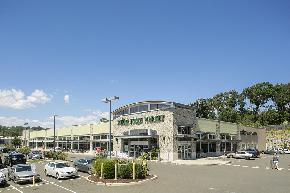 Maggiacomo: “Single-family rents tend to be more stable and less responsive to the ebbs and flows of a market or economic cycle than do apartment rents and home prices.”
Maggiacomo: “Single-family rents tend to be more stable and less responsive to the ebbs and flows of a market or economic cycle than do apartment rents and home prices.”
BOSTON—A market need on one side is a market opportunity on the other. In real estate, that equation looms the largest in the housing sector. With current demand far-outweighing supply, the single-family residential rental sector has risen to the occasion and is projected to outpace multifamily, office, retail, self-storage and hospitality growth in the next three years. GlobeSt.com spoke to Kevin Maggiacomo, CEO and president of SVN International Corp. (SVNIC), a Boston-based full-service CRE advisory firm, to get his take on housing trends and the strong performance of single-family rental investment.
“The stark difference in growth in the past decade between the number of renters and that of homeowners is quite astonishing, with the overall renter population increasing by more than 23 million versus less than 700,000 for owners,” as reported by the US Census, said Maggiacomo. “When the National Apartment Association reports that well over 4.5 million units are needed across all price points by 2030 just to satisfy current rental demand, you get a real sense of both the challenge and chance in the residential market right now.”
If economics is a choice between alternatives, single-family rental (SFR) has become more and more favored. Consider that the number of SFR households surged by more than 36 percent since 2005, while the number of all US households increased by 11 percent over the same period and the total number of owner-occupied single-family households grew by not even 5 percent. Before the housing crisis, SFRs accounted for 15.5 percent of all single-family households, but grew to roughly 1-in-5 single-family homes by 2017.
Obviously, the multifamily real estate sector isn’t standing pat. New apartment construction, especially with the continued growth of mixed-use and transit-oriented development, outpaces single-family home construction. Also, more advocacy for pro-development zoning laws, including in Massachusetts and Minneapolis, are helping the multifamily cause.
The current supply imbalance in the apartment sector and housing vacancy at 35-year lows have not surprisingly made the SFR rental sector an A+ alternative for investors. Demand is expected to expand by approximately 750,000 SFR units during the next five years, with five to 10 percent of all new build homes build-for-rent (BFR) product.
“Single-family rents tend to be more stable and less responsive to the ebbs and flows of a market or economic cycle than do apartment rents and home prices,” added Maggiacomo. “With long-term trends that favor rental demand, especially single-family homes, remaining strong, BFR and direct purchases from home builders and iBuyers are becoming a larger part of most REIT growth strategies that will scale faster than in the past.”

















 Copyright © 2024 ALM Global, LLC. All Rights Reserved.
Copyright © 2024 ALM Global, LLC. All Rights Reserved.